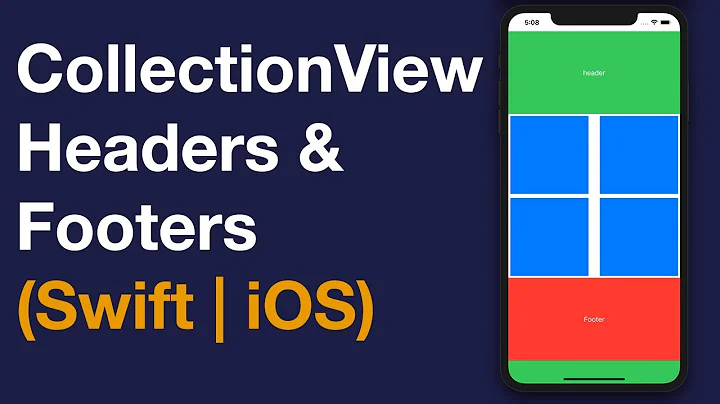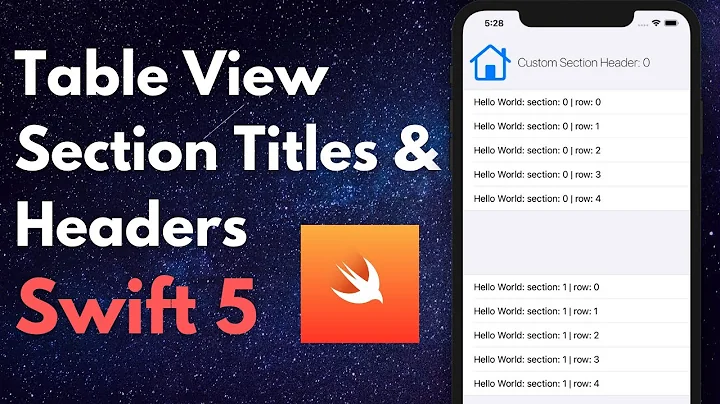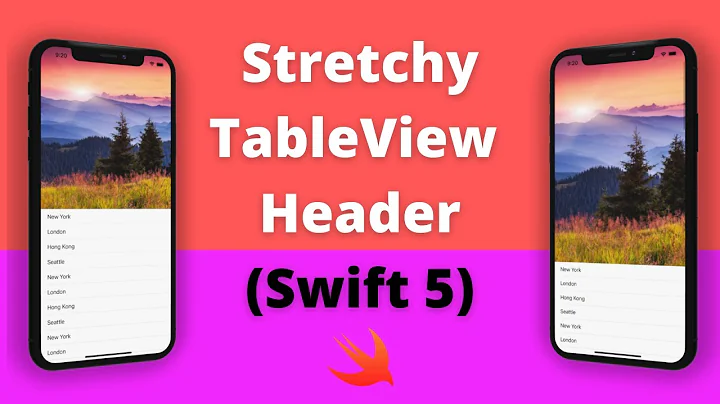iOS7 - Multiline Text in TableView Header?
Solution 1
This is how I do it, I got this multi line table header result:
Result

Source Code
- (void)viewDidLoad
{
[super viewDidLoad];
// Do any additional setup after loading the view, typically from a nib.
self.dataSource = @[@"apple", @"banana", @"orange", @"grapes", @"watermelon"];
self.sectionNames = @[
@"Fixture Counts per \nTable 2902.1 - 2014 IBC\n\n Occupancy Recap",
@"Women Fixtures",
@"Mens Fixture",
@"General Fixtures",
];
UITableView *tableView = [[UITableView alloc] initWithFrame:self.view.frame];
tableView.delegate = self;
tableView.dataSource = self;
[self.view addSubview:tableView];
}
-(NSInteger)numberOfSectionsInTableView:(UITableView *)tableView
{
return self.sectionNames.count;
}
-(NSInteger)tableView:(UITableView *)tableView numberOfRowsInSection:(NSInteger)section
{
if(section == 0)
{
return self.dataSource.count;
}
else
{
return 0;
}
}
-(UITableViewCell *)tableView:(UITableView *)tableView cellForRowAtIndexPath:(NSIndexPath *)indexPath
{
static NSString *cellID = @"cellID";
UITableViewCell *cell = [tableView dequeueReusableCellWithIdentifier:cellID];
if(cell == nil)
{
cell = [[UITableViewCell alloc] initWithStyle:UITableViewCellStyleDefault reuseIdentifier:cellID];
}
cell.textLabel.text = [self.dataSource objectAtIndex:indexPath.row];
return cell;
}
-(CGFloat)tableView:(UITableView *)tableView heightForHeaderInSection:(NSInteger)section
{
// calculate height of UILabel
UILabel *lblSectionName = [[UILabel alloc] init];
lblSectionName.text = [self.sectionNames objectAtIndex:section];
lblSectionName.textColor = [UIColor lightGrayColor];
lblSectionName.numberOfLines = 0;
lblSectionName.lineBreakMode = NSLineBreakByWordWrapping;
lblSectionName.backgroundColor = [UIColor grayColor];
[lblSectionName sizeToFit];
return lblSectionName.frame.size.height;
}
-(UIView *)tableView:(UITableView *)tableView viewForHeaderInSection:(NSInteger)section
{
// calculate height of UILabel
UILabel *lblSectionName = [[UILabel alloc] init];
lblSectionName.text = [self.sectionNames objectAtIndex:section];
lblSectionName.textColor = [UIColor lightGrayColor];
lblSectionName.numberOfLines = 0;
lblSectionName.lineBreakMode = NSLineBreakByWordWrapping;
lblSectionName.backgroundColor = [UIColor grayColor];
[lblSectionName sizeToFit];
return lblSectionName;
}
Solution 2
Set TableView to display Static Cells under "Content" and pick Grouped under "Style".
Then you can have multi line headers and footers automatically.
Solution 3
In case anyone has a similar issue, here is my code for the tableview portion of the code, complete with the section I commented out:
#pragma mark - Table view data source
- (NSInteger)numberOfSectionsInTableView:(UITableView *)tableView
{
// Return the number of sections.
return 4;
}
// Set Custom Heights for Headers
-(CGFloat)tableView:(UITableView *)tableView heightForHeaderInSection:(NSInteger)section{
if(section == 0 )
return 100.0f;
else return 60.0f;
}
- (NSInteger)tableView:(UITableView *)tableView numberOfRowsInSection:(NSInteger)section
{
switch (section)
{
case 0: // Recap
return 2;
break;
case 1: // Womens
return 5;
break;
case 2: // Mens
return 5;
break;
case 3: // General
return 6;
break;
}
return 0;
}
// ^.^ Customize the section title
// -
/*
- (NSString *)tableView:(UITableView *)tableView titleForHeaderInSection:(NSInteger)section
{
switch (section)
{
case 0:
return [NSString stringWithFormat:@"Fixture Counts (rounded up) per \nTable 2902.1 - %@ IBC\n\n Occupancy Recap", strCodeYear ];
break;
case 1:
return [NSString stringWithFormat:@"Womens Fixtures"];
break;
case 2:
return [NSString stringWithFormat:@"Mens Fixtures"];
break;
case 3:
return [NSString stringWithFormat:@"General Fixtures"];
break;
}
// To avoid "control reaches end of non-void function"
return 0;
}
*/
- (UIView *) tableView:(UITableView *)tableView viewForHeaderInSection:(NSInteger)section
{
// calculate height of UILabel
UILabel *lblSectionName = [[UILabel alloc] init];
// lblSectionName.textColor = [UIColor lightGrayColor];
lblSectionName.numberOfLines = 0;
lblSectionName.lineBreakMode = NSLineBreakByWordWrapping;
lblSectionName.backgroundColor = [UIColor colorWithRed:245.0f/255.0f green:245.0f/255.0f blue:245.0f/255.0f alpha:0.9f];
// lblSectionName.text
switch (section)
{
case 0:
lblSectionName.text = [NSString stringWithFormat:@"Fixture Counts (rounded up) per \nTable 2902.1 - %@ IBC\n\n Occupancy Recap", strCodeYear ];
break;
case 1:
lblSectionName.text = [NSString stringWithFormat:@"Womens Fixtures"];
break;
case 2:
lblSectionName.text = [NSString stringWithFormat:@"Mens Fixtures"];
break;
case 3:
lblSectionName.text = [NSString stringWithFormat:@"General Fixtures"];
break;
}
[lblSectionName sizeToFit];
return lblSectionName;
}
// ^.^ Customize the appearance of table view cells.
// -
- (UITableViewCell *)tableView:(UITableView *)tableView cellForRowAtIndexPath:(NSIndexPath *)indexPath
{
// UITableViewCell *cell = [tableView dequeueReusableCellWithIdentifier:@"cell" forIndexPath:indexPath];
// ^.^ Utilize the CustomCell class
// -
static NSString *CustomCellIdentifier = @"CustomCellIdentifier";
CustomCell *cell = (CustomCell *)[tableView dequeueReusableCellWithIdentifier: CustomCellIdentifier];
if (cell == nil) {
NSArray *nib = [[NSBundle mainBundle] loadNibNamed:@"CustomCell" owner:self options:nil];
for (id oneObject in nib)
if ([oneObject isKindOfClass:[CustomCell class]])
cell = (CustomCell *)oneObject;
}
// Identify Section and Row
NSUInteger section = [indexPath section];
NSUInteger row = [indexPath row];
// Sets the number of lines in the cell to be a variable
cell.titleLabel.numberOfLines = 0;
switch (section)
{
case 0:
cell.titleLabel.text = [titleFixOccupancyArray objectAtIndex:row];
cell.dataLabel.text = [dataFixOccupancyArray objectAtIndex:row];
cell.warningLabel.text = [warningFixOccupancyArray objectAtIndex:row];
break;
case 1:
cell.titleLabel.text = [titleWomensArray objectAtIndex:row];
cell.dataLabel.text = [dataWomensArray objectAtIndex:row];
cell.warningLabel.text = [warningWomensArray objectAtIndex:row];
break;
case 2:
cell.titleLabel.text = [titleMensArray objectAtIndex:row];
cell.dataLabel.text = [dataMensArray objectAtIndex:row];
cell.warningLabel.text = [warningMensArray objectAtIndex:row];
break;
case 3:
cell.titleLabel.text = [titleFixturesArray objectAtIndex:row];
cell.dataLabel.text = [dataFixturesArray objectAtIndex:row];
cell.warningLabel.text = [warningFixturesArray objectAtIndex:row];
break;
}
return cell;
}
Solution 4
Following @Zhang, I prefer to use NSString boundRectWithSize to compute the header height:
- (UIView *)tableView:(UITableView *)tableView viewForHeaderInSection:(NSInteger)section {
// create a custom multi-line label
UILabel *label = [[UILabel alloc] init];
label.text = self.headerText;
label.numberOfLines = 0;
label.textAlignment = NSTextAlignmentCenter;
label.lineBreakMode = NSLineBreakByWordWrapping;
label.font = self.headerFont;
[label sizeToFit];
return label;
}
- (CGFloat)tableView:(UITableView *)tableView heightForHeaderInSection:(NSInteger)section {
// compute size
NSString *text = self.headerText
CGRect rect = [text boundingRectWithSize:CGSizeMake(CGRectGetWidth(tableView.frame), CGFLOAT_MAX) options:NSStringDrawingUsesLineFragmentOrigin attributes:@{NSFontAttributeName : self.headerFont} context:nil];
return MAX(CGRectGetHeight(rect), 44); // keep height no smaller than Plain cells
}
Related videos on Youtube
Michael at AppsToKnow
Updated on September 15, 2022Comments
-
Michael at AppsToKnow over 1 year
I am trying to update the code in one of my apps to iOS7 and I am transitioning it to using Storyboards. I have run into a snag in trying to get a table view header to display more than one line of text (the table view cells still work fine).
The TableView was created using the Storyboard, but I am using the custom cell from the older program instead of building a new custom cell in the Storyboard.
My code which used to work fine:
- (NSString *)tableView:(UITableView *)tableView titleForHeaderInSection:(NSInteger)section { switch (section) { case 0: return [NSString stringWithFormat:@"Fixture Counts per \nTable 2902.1 - %@ IBC\n\n Occupancy Recap", strCodeYear ]; //(rounded up) break; case 1: return [NSString stringWithFormat:@"Womens Fixtures"]; break; case 2: return [NSString stringWithFormat:@"Mens Fixtures"]; break; case 3: return [NSString stringWithFormat:@"General Fixtures"]; break; } // To avoid "control reaches end of non-void function" return 0; }The \n used to be enough to make the header expand with the text lines. I can tell that the \n is still triggering a return, but only one line of text is visible.
I have resized the header to make sure there is enough room, but still only one line of text:
// Set Custom Heights for Headers -(CGFloat)tableView:(UITableView *)tableView heightForHeaderInSection:(NSInteger)section{ if(section == 0 ) return 200.0f; else return 60.0f; // put 22 in case of plain one.. }I tried finding a way to use numberOfLines like for a label, but without success. I looked at the UITableView Class Reference and did not see anything referencing the number of lines, but I tried anyway:
- (UIView *) tableView:(UITableView *)tableView viewForHeaderInSection:(NSInteger)section { UILabel *label = [[UILabel alloc] init]; label.numberOfLines = 2; return 0; // nil 0 view section }Any help is appreciated.
-
 nhgrif almost 10 yearsI'm surprised you're getting any text at all and no warning given your
nhgrif almost 10 yearsI'm surprised you're getting any text at all and no warning given yourtableView:viewForHeaderInSection:method. You're returningnilwhen you should be returning a view...
-
-
Michael at AppsToKnow almost 10 yearsThank you - I was able to get it to work. I ended up commenting out titleForHeaderInSection and putting the switch in the viewForHeaderSection








